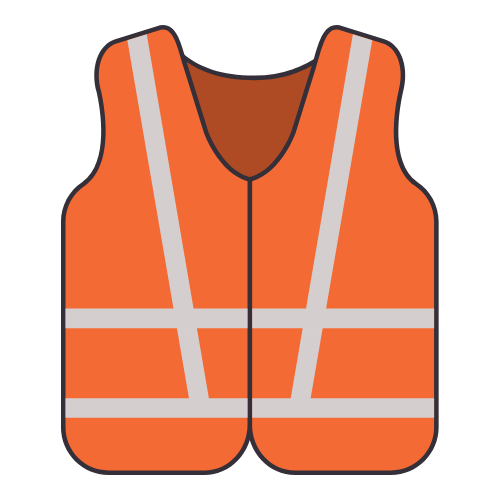The last year has seen a huge change in working arrangements for many people during the Covid-19 pandemic. When the Prime Minister announced the ‘stay at home’ order in Spring 2020, a lot of people and businesses had to adapt to working from home very quickly, many for the first time.
Now, 12 months after the ‘stay at home’ order we are still being asked to work from home if we can, with that message planning on being rescinded sometime this summer (if all goes well). Many businesses and employees will be glad to get people back in the workplace, but a large number of people will keep the working from home arrangement or adapt to some hybrid arrangements where employees are asked to go into the workplace for some days and work from home for the rest.
What arrangements do you have in place to manage the health and safety of your homeworkers?
The HSE and the law is clear – as an employer, you have the same health and safety responsibilities to your homeworkers as any other workers.
Managing the health and safety of your employees who work from home brings its own set of challenges, and there may be some reluctance to see the value of a homeworker risk assessment. Most people see their home as the safest place on earth, and will not appreciate any outside ‘interference’ or an employer telling them what they must and must not do in their own home. That is not what the homework risk assessment is for, it is there to make sure there are no significant risk of harm to the homeworker and other people in their home introduced as a result of the home working arrangements.
When do we need a homeworker risk assessment?
As an employer, you must assess and control the risks for all hazards arising from your work activities, and if you have five or more employees, you must record the significant findings of your assessment. Does this mean you need to carry out a risk assessment for every single occasion of homeworking? I would suggest that would be impractical.
While there is no formal definition, your homeworkers will likely fall into one of three categories:
- Permanently home-based – their home office is their permanent place of work, with no formal requirement to come into the workplace as part of their contract of employment.
- Hybrid – regularly works from home but is required to attend the workplace for a certain number of days per week or month as part of their formal working arrangements. May have a dedicated desk or office in the workplace or use a hot-desk when needed.
- Occasional – permanently based in the workplace, but works from home occasionally, e.g. no more than 1 day per week.
To manage occasional homeworking situations, the general risks of homeworking can be covered alongside the routine risk assessments for the job role or activities.
For permanently home-based workers, or those with a hybrid arrangement, you need to look at the risks of homeworking in more detail – whether that is done as a stand-alone risk assessment or alongside the general risk assessment for the job role or activities will depend on what works best with your current Safety Management System.
Your homeworker risk assessments should be carried out before your employee starts working from home, and reviewed periodically or if there are changes to the working arrangements.
How do I carry out a homeworker risk assessment?
One way of carrying out a homeworker risk assessment is by sending a form to your worker for them to complete and send back to you, but I’m not a fan of this method. It turns the risk assessment process into a form-filling, tick-box exercise,
does not promote any meaningful conversation between the worker and their employer and doesn’t give opportunity to tease out any sticking-points that might not be highlighted by a self-assessment.
For me, the true benefits of carrying out risk assessments are not the signed-of pieces of paper at the end (that is just a record of what you have talked about) but the conversations the process, when done correctly, prompts you to have and the resulting actions and agreements that come from those conversations.
One of the primary hazards of home working is work-related stress arising from feeling out of touch with the employer, or isolated from the rest of the team. By taking the time to go through the risk assessment process with your homeworker, you both get the chance to talk about these issues, and reinforce the employers message that they truly care about the health and wellbeing of their people.
Carrying out a homeworker risk assessment does not need you to visit the home where you worker is based. It is more efficient, and perfectly acceptable, to carry out the risk assessment remotely by telephone or video call, or in the central workplace. The risk assessment can be carried out by the employer, or by an external consultant. Check out how DanumBS can help you carry out your homeworker assessments.
What needs to be included in a Homeworker Risk Assessment?
The vast majority of home working will be office-based tasks which are inherently low risk. Your risk assessment needs to cover all the potential significant risks resulting from the working at home arrangements.
As a minimum you need to consider:

Working environment – is the working environment suitable?

DSE assessment – have you carried out a DSE assessment and acted on its findings?

Electrical safety – has equipment supplied by the employer been PAT Tested?

Fire safety – does the home have a working smoke alarm and escape plan?

Emergency arrangement – is there a First Aid kit available? Does the worker know what to do and who to contact in case of accident and illness?

Manual Handling – will the worker be handling heavy or bulky objects? Have you supplied manual handling aids and given manual handling training?

Lone working – many home workers will be lone working, do you have a ‘buddy-system’ to check in on people so you know they are safe and well?

Stress at work – do you have clear lines of communication? Does your worker understand their tasks and know who to contact if they don’t? Is there a clear difference between work-time and home-time?
So, what is the key message to take away?
Employers owe the same duty of care to look after their homeworkers as they do for workplace-based workers – out of sight should definitely not mean out of mind!
For somebody who occasionally works from home, the additional risks from working from home are usually minimal. These risks can generally be covered in the routine risk assessments for the job role or activities.
For hybrid working arrangements and permanently based homeworkers, employers should review the specific risks that arise from homeworking and put controls in place to remove or minimise those risks. This is best done in conversation with the homeworker, rather than as a self-assessment, so that any issues can be discussed and resolved.
If you found this useful, then why not sign up to my weekly H&S roundup to get updates, news and tips from the world of health and safety direct to your inbox.
Want to learn more about homeworker risk assessments?

